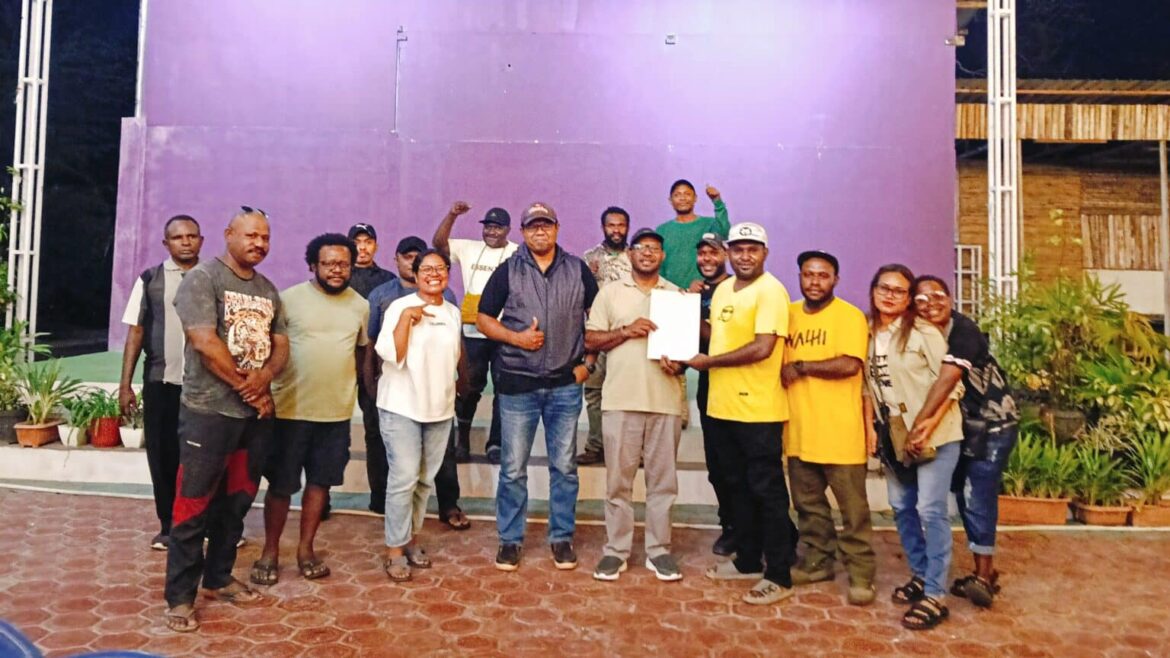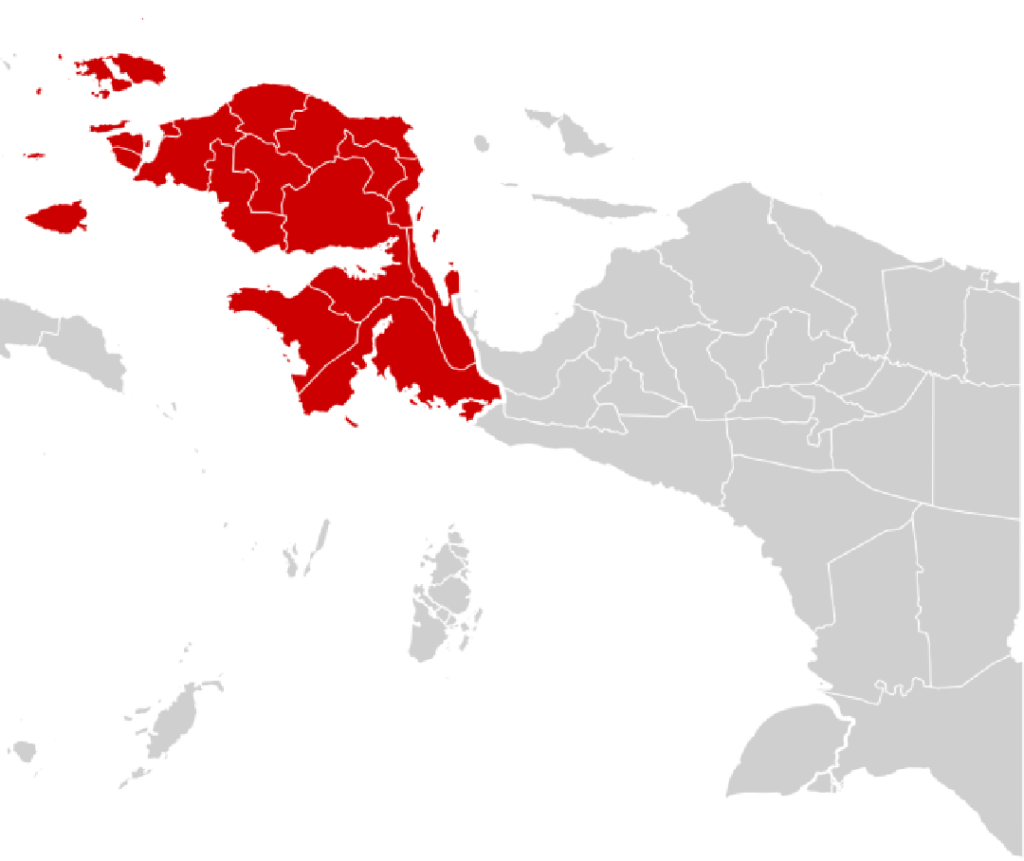In early October 2025, the usually calm coastal town of Nabire will transform into a hub of energy, ideas, and voices as it plays host to the first-ever Festival Media Tanah Papua (Papua Land Media Festival). The event, scheduled for 6–8 October 2025 at the former Nabire Airport field, is being hailed as a turning point in the island’s media history.
For Papua, a region often portrayed through the lens of conflict, natural wealth, and political tension, the festival offers something entirely different: an opportunity for Papuans themselves to reclaim the narrative, strengthen professional journalism, and showcase the richness of their local media landscape. Organized by the Asosiasi Wartawan Papua (AWP), this festival represents the collective dream of Papuan journalists who, for years, have envisioned a platform that could bring together reporters, editors, photographers, videographers, public relations officers, government officials, and community members under one roof.
The Road to Nabire: How Central Papua Became the Chosen Host
The idea of holding a media festival in Papua was not born overnight. Conversations about the need for such an event had been circulating among Papuan journalists for years. What was missing was structure, leadership, and a province ready to take on the responsibility. That changed in July 2025, when a key meeting took place in Kali Bobo, Nabire.
During that meeting, AWP Chairperson Eliza Sekenyap announced the official appointment of the festival’s core committee: Abeth Abraham You as chair, Melki Dogopia as secretary, and Theresia Tekege as treasurer. With these names came renewed confidence that the vision could finally materialize.
Central Papua’s selection as host was both practical and symbolic. Nabire is geographically strategic—easier to access compared to many remote towns across Papua—and it embodies a sense of inclusivity. Hosting the first festival here signals that media development is not only centered in big cities like Jayapura but also shared across Papua’s newer provinces.
A Festival with a Mission Beyond Celebration
Unlike many festivals that emphasize spectacle, the Festival Media Tanah Papua is designed with a strong developmental mission. Festival chair Abeth You explained to Salam Papua that the event will focus on capacity building and professional networking.
“We don’t just want Papuan journalists to write the news,” Abeth said. “We want them to master investigative journalism, understand digital security, and be prepared for the challenges and opportunities of artificial intelligence in the media industry.”
That mission is reflected in a packed agenda:
- Workshops and training in investigative reporting, digital security, and the use of AI in journalism;
- Talk shows and panel discussions exploring media’s role in shaping positive narratives about Papua;
- Photography and video exhibitions, showcasing visual stories of Papuan communities;
- Journalism book displays and competitions, encouraging young writers;
- And the prestigious Papua Journalist Association Award 2025, celebrating journalistic excellence across the region.
The blend of professional training and public engagement makes the festival unique. It is not just a gathering of journalists—it is a community event designed to foster dialogue between media workers, government representatives, students, and the broader public.
Who Will Attend: Numbers That Tell a Story
The scale of the festival reveals just how much anticipation it has generated. 117 journalists from across the four Papuan provinces have confirmed attendance. In addition, 51 national media outlets will send representatives, ensuring that the stories emerging from Nabire will resonate far beyond Papua.
The participant list also includes:
- 36 public relations officers from local governments;
- 26 public relations officers from regional parliaments (DPRD);
- 100 university students and 100 school students;
- Senior journalists and editors from Papua and Jakarta;
- Representatives from major corporations such as PT Freeport Indonesia;
- And high-ranking officials, including Governor Meki Fritz Nawipa and the Chairperson of Indonesia’s Press Council.
This diverse mix underscores the festival’s ambition: to create not only a journalistic forum but also a space where multiple stakeholders can meet, listen, and learn from one another.
Why It Matters: Building a Stronger Media Ecosystem in Papua
The significance of this festival extends well beyond three days of activities. For Papua, where journalists often work in isolation across vast and challenging terrain, the creation of a united media platform is a milestone.
Festival organizers hope the event will:
- Strengthen professional networks, allowing journalists from different regions to collaborate and support one another;
- Boost human resource capacity, particularly in new areas such as digital journalism, AI, and media ethics;
- Encourage positive narratives about Papua, countering the often one-sided portrayals in mainstream Indonesian media;
- Bridge gaps between media and government, fostering dialogue and trust;
- And ultimately, lay the foundation for a peaceful, secure, and inclusive media ecosystem across the island.
As Abeth summarized in his vision statement:
“The festival is about creating a media environment that is trusted by the public, capable of protecting its practitioners, and able to tell Papua’s stories in a way that inspires, educates, and unites.”
Challenges on the Horizon
While the optimism is palpable, festival organizers acknowledge the hurdles ahead. Nabire, though strategically located, faces logistical challenges in hosting hundreds of guests. Questions of accommodation, transportation, and reliable internet connectivity are not trivial in this part of Papua.
Health and safety are also considerations. October falls within the transitional season in Papua, when heavy rains can disrupt travel. Organizers are working closely with local authorities to ensure contingency measures are in place.
Perhaps the greatest challenge, however, lies not in logistics but in sustainability. Will this festival be a one-off highlight, or can it ignite a long-term movement toward stronger media in Papua? That is the question hanging in the balance as Nabire prepares to welcome its guests.
The Symbolism of Nabire: More Than Just a Venue
For many Papuans, Nabire carries symbolic weight. Historically, it has been a meeting point between the highlands and the coast, a place where cultures intersect. By hosting the first Festival Media Tanah Papua here, organizers send a message: Papua’s future will be built not by one city or one community alone, but by all working together.
Local residents, too, are preparing to welcome guests with traditional hospitality. Cultural performances, music, and Papuan culinary showcases are expected to accompany the formal festival agenda, turning Nabire into a vibrant stage of culture and dialogue.
Looking Beyond 2025: The Festival’s Potential Legacy
If the inaugural festival succeeds, it could set the precedent for an annual or rotating event, moving from province to province across Papua. Such continuity would ensure that media development is not concentrated in one place but becomes a shared journey for all Papuans.
The long-term vision includes:
- Establishing mentorship programs for young journalists;
- Creating a Papua Media Network, connecting newsrooms across the island;
- Developing online resource platforms for training and collaboration;
- And attracting investment into media infrastructure, from internet connectivity to press freedom initiatives.
For many, the festival is not just about the present—it is about building a legacy.
Conclusion
As the countdown to 6 October 2025 continues, Central Papua stands at the threshold of history. The Festival Media Tanah Papua is more than a gathering; it is a declaration of intent by Papuan journalists to strengthen their craft, embrace technology, and take ownership of the narratives that shape their communities.
In Nabire, journalists, government officials, students, and international observers will come together in an unprecedented atmosphere of collaboration. The stakes are high, the challenges real, but the opportunity is undeniable.
If successful, the festival could mark the beginning of a new chapter in Papua’s story—one where local voices are amplified, journalism is strengthened, and the island’s media ecosystem matures into a trusted pillar of society.
For Papua, long described by outsiders, the time has come to tell its own story. And in October 2025, Nabire will be the place where that story begins anew.


